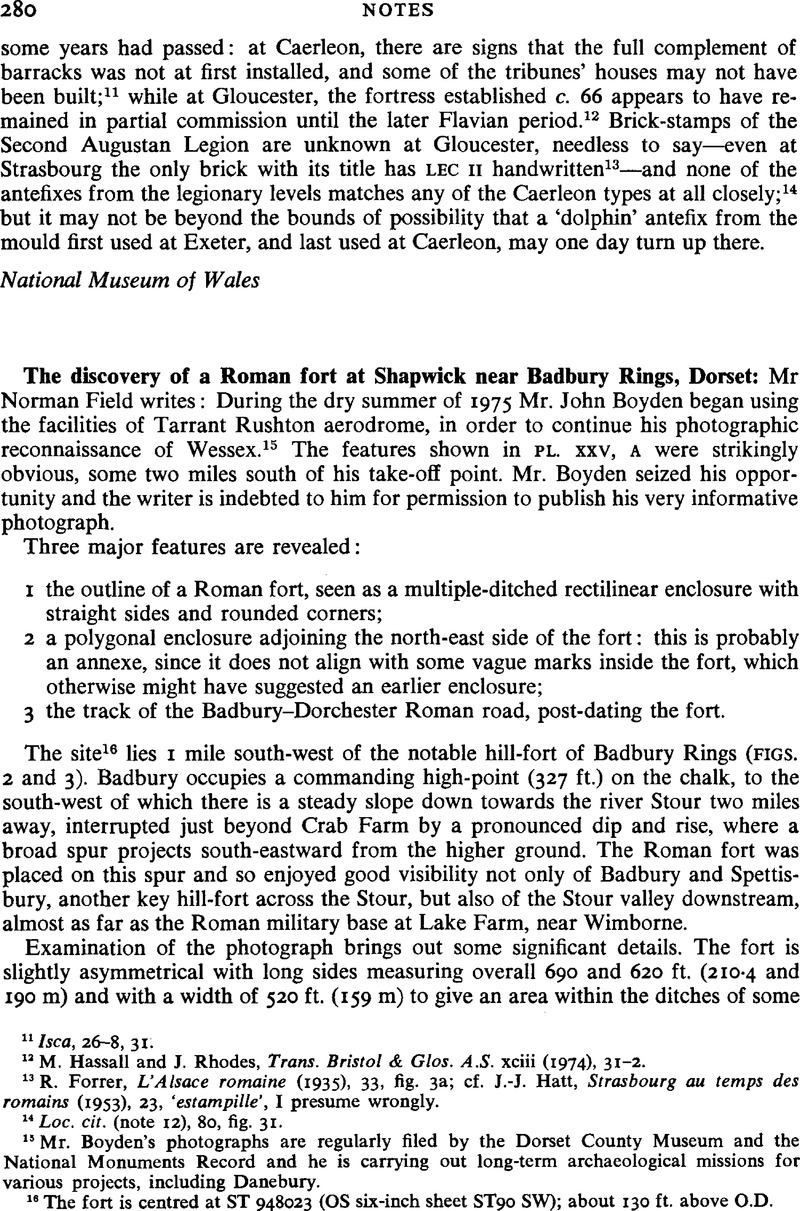Published online by Cambridge University Press: 09 November 2011

15 Mr. Boyden's photographs are regularly filed by the Dorset County Museum and the National Monuments Record and he is carrying out long-term archaeological missions for various projects, including Danebury.
16 The fort is centred at ST 948023 (OS six-inch sheet ST90 SW); about 130 ft. above O.D.
17 RCHM Dorset, ii, Part 3, 528; Margary, Roman Roads in Britain (1967), 105–6.Google Scholar
18 For example, of a dozen sherds of samian, all appear to be South Gaulish. One is the base of a platter (Dr. 15–17) with a bevelled foot-ring (cf. Hawkes and Hull, Camulodunum, 183, form 6A). Other scraps include terra nigra and terra rubra.
19 Richmond, , Hod Hill ii, 2Google Scholar; Webster, , Proc. Dorset Natur. Hist. Archaeol. Soc, 82 (1960), 91. But Frere, Britannia (1967), 74, hinted the opposite.Google Scholar
20 Proc. Dorset Natur. Hist. Archaeol. Soc, 95 (1973), 87–88.Google Scholar
21 For Spettisbury, corpses hastily thrown into the ditch with native and Roman military gear (refs. in RCHM Dorset, iii, Part 2, 246); and for Badbury, the mysterious earthwork only ¼ mile to the west of the hill-fort has yielded a Roman bolt-head: Proc. Dorset Natur. Hist. Archaeol. Soc., 87 (1965), 102.Google Scholar
22 Richmond, op. cit. (note 19), 2.
23 Mr. Boyden has also taken photographs of a small squarish earthwork with rounded corners, lying on well-ploughed land at Keynston Down (ST 926057). It has not yet produced surface finds to date it, but it superficially resembles a Roman fortlet. It lies east of Buzbury Rings and close to the suggested course of the Badbury-Hod road, at the half-way point between Lake and Hod, a little off the direct line.
24 An excellent summary of what is known about the campaign of the Second Legion in this region has been made recently by Professor Branigan, K.: Proc. Dorset Natur. Hist and Archaeol. Soc. 95 (1973), 50–57.Google Scholar